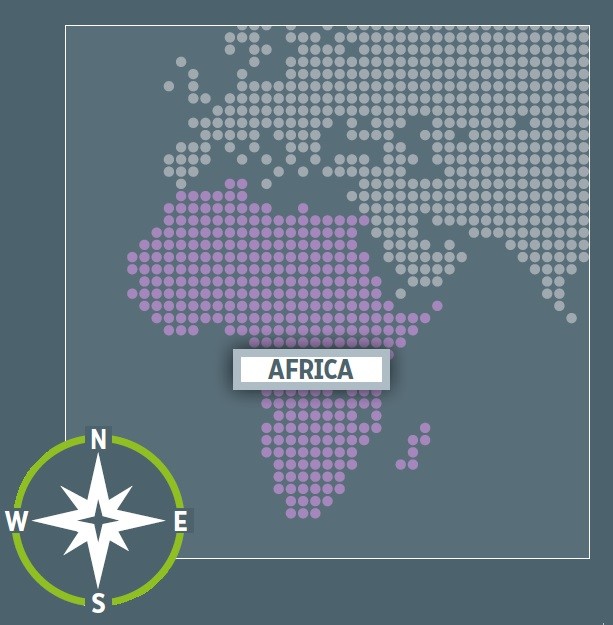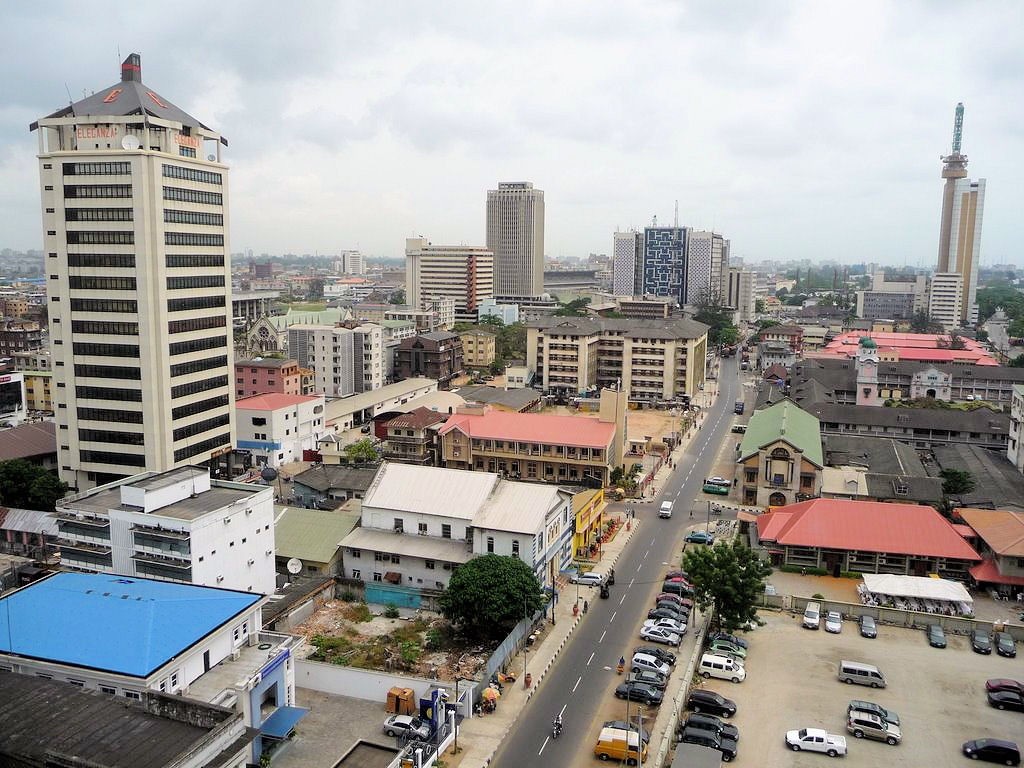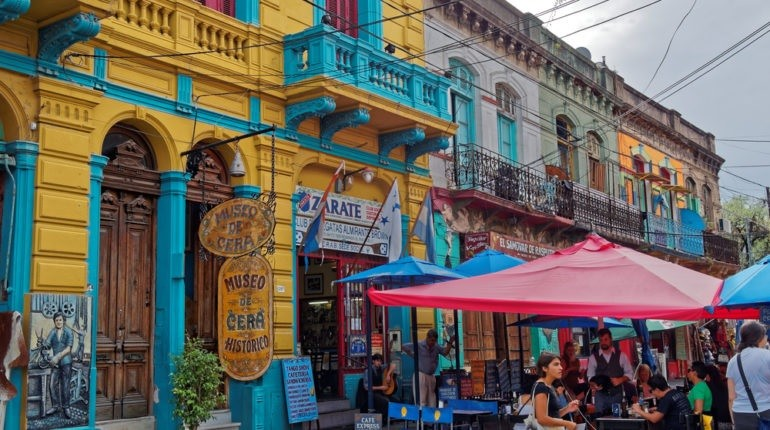
Having covered Europe, North America, Asia-Pacific and LatAm over the previous weeks, Insurance Nexus' international tour of Insurance and Insurtech trends has arrived in Africa: the world's fastest-growing continent in terms of population and second-fastest in terms of economic growth (behind only Asia-Pac).
Our Regional Profile on Africa draws on our inaugural Global Trend Map. As we have not been able to constitute tables of insurance challenges and priorities for Africa like we did for Europe, North America, Asia-Pacific and LatAm, this profile relies instead on testimony from our regional correspondents to paint a qualitative picture of local trends:
- Kenya-based George Otieno Ochieng, Claims Manager at Britam General Insurance Company
- Belhassen Tonat, Head of Non-Life at Munich Reinsurance Company of Africa Ltd in South Africa
On account of Africa’s immense size and variety, we begin with a high-level breakdown of the market across the continent, before expanding on four more specific themes:
1) Taking microinsurance from theory to practice
2) Insurance market development in Africa, including regulatory, educational and multinational initiatives
3) Leveraging tech to drive a lower price point for low-income market segments
4) Overall growth prospects for African Insurance
Africa is a continent of 56 countries, with diverse demographics, a mix of evolving regulations and prospects for unprecedented growth. Africa’s estimated population of over 1.16 billion in 2015 is expected to double by 2050. In some states, more than half the population is under the age of 25, and life expectancy across the region is low (less than 50 years on average), presenting challenges and opportunities for insurance companies.
Sub-Saharan Africa — the evolution of insurance regulation, EY
Market Characterisation
The African market is very different from the other global regions we cover in the course of our Regional Profiles. Its population (approximately 1.2 billion at the time of writing) is second only to Asia-Pacific, and it is here as well that most of the world’s future population growth will occur, taking the continent’s population to 2.4 billion by 2050 (according to UN statistics).
The African population will reach some 2.4 billion by 2050, according to UN statistics ...
Africa bears comparison with Asia-Pacific from an emerging-market perspective; however, while we are seeing the growth of middle-class centres in Africa, this trend is both less pronounced and less generalised than in Asia-Pacific. To reflect this, and based on our conversations with correspondents in the region, we believe it makes sense to talk about three broad sub-regions: Sub-Saharan Africa (excluding South Africa), South Africa and North Africa.
Sub-Saharan Africa
Much of society in Sub-Saharan Africa is agrarian, with large swathes of the population engaged in low-income or subsistence farming, and this has a profound effect on the nature of insurance in the region. Britam's George Otieno Ochieng identified low levels of insurance penetration as the leading challenge faced by insurers in his native Kenya.
‘As we are talking, the penetration level of insurance in Kenya is at 2.9%,’ he explains. ‘That means there is a huge, huge gap that the insurance industry has to address.’
This trend applies to the rest of Sub-Saharan Africa and is, if anything, even more pronounced.
‘Kenya has higher penetration than the majority of countries in sub-Saharan Africa, followed by Nigeria. Nigeria has a huge population but unfortunately the level of insurance penetration is not as high compared to Kenya,’ Ochieng continues.
Munich Re's Belhassen Tonat, speaking about Sub-Saharan Africa from a South African perspective, is quick to agree on the importance of boosting penetration, not just in emerging but also in middle-class segments.
‘We have an increase in the populations, or the middle class, in many countries across Sub-Saharan Africa, where the needs of insurance are not yet exhausted,’ he comments. ‘There is a lot to do for the primary insurance company, for the insurers, to put the right products in front of this growing middle class in Sub-Saharan Africa.’
Penetration certainly lags in the middle class but the consideration applies, to a much greater extent, to the low-income masses who have not traditionally been insured. This micro-class (so-called because they represent the prime target for microinsurance) may not have pockets as deep as the middle class but they more than make up for this with their tremendous size. They therefore constitute an opportunity every bit as big as that represented by the middle class, and we frankly have good reason to believe it will be bigger.
There are considerable opportunities for further developing both general and life insurance in the continent. Products that can usefully be developed include, but are not limited to, health insurance, micro-insurance, agricultural insurance and other products that can alleviate poverty and promote small and medium enterprises (SMEs). One area of great interest is catastrophe insurance.
Making Finance Work for Africa (www.mfw4a.org)
Access your complimentary copy of our inaugural Global Insurance Trend Map here!
South Africa
Returning to our characterisation of the continent as a whole, South Africa is a definite case apart with its well-defined and technologically advanced middle class. Even though this only serves a minority of the population, we still have here a mature, established insurance market which is not quite matched by anything else on the continent:
‘The penetration level is high there compared to other parts of Africa at around 11%,’explains Ochieng. ‘The market there is fully grown, extensive, and that’s why you find a lot of international companies having their offices in South Africa – they look to it as a gateway to Africa, so they try to organise their offices there.’
Tonat identifies the customer as the primary driver of market change in South Africa, in line with other developed markets we have covered as part of this series like Europe and North America:
‘The traditional way of selling insurance doesn’t appeal any more to the new generations, so it’s about finding new ways and incentives for people buying insurance. We’ve seen a lot of new concepts in the South African market: direct insurance is one, another is linking technology to insurance to talk to people in their language and speed up all the processes. At the end of the day, it’s about changing the image of insurers as being slow and forever behind the new technology trends, positioning insurance as a trendy product which responds to the needs of clients here.’
North Africa
The final sub-region we identified was North Africa. Here, we are generally dealing with higher-GDP economies than we find in Sub-Saharan Africa, although rural poverty is still widespread. Plenty of broader cultural differences exist too, with Islam for example representing the majority religion, although it is present of course across much of central Africa.
In North Africa, insurers struggle with penetration but not to the same extent as in Sub-Saharan Africa, placing them somewhere between the two poles represented by our other sub-regions:
‘In North Africa, the penetration levels are not as high as in South Africa. I would say about 4%, and we’re talking there about countries like Egypt, Morocco and Algeria,’expands Ochieng.
We can discern two broad approaches for insurers looking for opportunities in Africa. One is to target the middle class, which is small but rapidly expanding across much of the continent (and already firmly established in South Africa). The other is microinsurance, which ecosystem and non-ecosystem players alike continue to drive forwards through innovation and technology.
As the ‘middle-class opportunity’ in Africa responds to challenges (and utilises solutions) that are broadly aligned with those that we have explored in relation to our more developed markets, this Regional Profile on Africa leans towards microinsurance.
‘I would say they are both huge opportunities,’ comments Ochieng on the two broad approaches we have identified. ‘But the micro-class has more opportunities, more potential for growth, than the middle class. Because when you look at the micro-class, they are very big in terms of volume.’
1. Making Microinsurance Work
Microinsurance, also known as impact, inclusive, affordable or mass insurance, is by no means unique to Africa, other key markets being Asia-Pacific and LatAm. Indeed, due to the population size and some early movers, China and India between them already make up the lion’s share of the market. Microinsurance is currently estimated to reach approximately 265 million customers worldwide, with an annual growth rate in customers insured of 30% in Africa and 25% in Asia & Oceania.
Microinsurance is estimated to reach approximately 265 million customers worldwide, with an annual growth rate in customers insured of 30% in Africa and 25% in Asia & Oceania.
This is not just a sizeable opportunity, it is also a growing opportunity – and there appears to be no immediate ceiling in sight. Indeed, as early as 2010, Swiss Re reckoned that insurers could generate $40 billion of premiums from policyholders living on $4/day or less.
Microinsurance requires a radically different model from insurers if it is to be sustainable and profitable – and to make the difference it is promising to the lives of low-income policyholders. And rather than this detracting from insurers’ core business, it can actually be seen as a way for them to hedge their bets portfolio-wise. Their scale, their actuarial expertise and their wide-ranging business relationships are all unique strengths they can bring to bear on this new low-end market at a time when their grip on high-end markets threatens to be eroded by nimbler, customer-centric new entrants.
"With better data leading to an improved understanding of risk, insurers can make previously uninsurable risks insurable. This helps to address the huge protection gap between insured and uninsured risks that exists today. Emerging new markets, like microinsurance, expand the overall industry pie not only to the benefit of all market participants but more importantly to society at large."
Nick Martin, Fund Manager at Polar Capital Global Insurance Fund
Ochieng regards the micro-class and the middle-class not as silos but as part of a bigger picture of country-wide development:
‘One of the things that I believe is that even this micro-class will one day become middle class, so you end up growing them. If you develop a product for the micro-class and you develop a product for the middle class, then you grow with them together as a whole. That means you can reap more considerable benefit than those companies that are only concentrating on the contemporary insurance products that don’t correspond to the needs of the African continent.’
Microinsurance therefore represents a strategic investment for insurers in developing markets, regardless of where the bulk of their business currently comes from. Ochieng believes that we are beginning to witness a paradigm shift as more and more insurers move in this direction.
‘The insurance companies have seen that there’s a huge gap, and they need to concentrate on the low-end market where there is huge growth, a huge opportunity,’comments Ochieng. ‘But you have to really understand: what are these microproducts meant for? Which people are supposed to buy this product? What is their lifestyle? Where have they come from? What is their understanding of insurance?’
The first and most obvious requirement of the target market is an affordable premium price, affordable on both a gross-sum and a cash-flow basis, bearing in mind that many targets are living on less than $1/day. Premium price can be reduced by attaining massive scale, while the burden of payments can be eased by breaking them down into manageable instalments (so lots of small spread-out payments rather than large infrequent ones).
However, both these solutions – large numbers of policies broken down into large numbers of instalments – compound the distribution problem, which is already more severe in Africa, measured by conventional yardsticks, than elsewhere in the world.
‘When you multiply by the number of people, it’s enough money, but the problem is actually on the distribution costs,’ Tonat concedes. ‘For years now, we have been looking for ways to minimise the distribution cost for microinsurance products. Because we are talking about premiums in the range of $10-20 per year, for example. If, in order to distribute these products, you need 60-70% of the premium for the distribution channel, then that’s not economic at all and it goes to the loss of the microinsurance policyholders.’
Distribution must be paid for somehow, and the risk is of course that the price insurers can shave off premiums through scale gets added right back on in the form of distribution cost. So how are insurers to get over this hurdle?
Traditional high-end insurance has long been wedded to the agency model, whereby potential customers must seek out an agent in person to initiate the process, and for microinsurance targets in Africa it is plain to see that this would neither be feasible (due to infrastructure) nor indeed cost-effective. However, there is also a long history in developed markets, at least in personal lines, of using affiliate channels as a lower-cost and higher-engagement way of reaching potential customers.
It is this approach that our correspondents believe makes the most sense for distributing microinsurance products in Africa, adapted of course to suit the needs of a largely rural, agriculturally based population.
‘There must be a public-private partnership for these sorts of ventures to be successful,’ explains Ochieng. ‘And, of course, you also have to reach a huge population for it to make sense for the insurers. Because the insurers look for the law of large numbers – if you don’t have the large numbers, then even taking this kind of risk itself won’t be easy.’
Instead of millions of individuals paying their premiums via millions of separate transactions, you instead have one entity that pays the insurer in less frequent, aggregated sums on their behalf. While these entities are often banks, supermarkets and telcos, sometimes as part of the same holding company as the insurer, Ochieng gives a couple of examples of what these partnerships look like in the context of Sub-Saharan Africa.
Take Syngenta for instance, which offers insurance against crop failure as a bundle with its primary seed-distribution business:
‘If you buy any seed from them, there is a slight charge for insurance that is already inbuilt in that particular price. So, the minute you buy from them, you are insured,’expands Ochieng.
Ochieng mentions a similar arrangement for livestock insurance, where the Kenyan government has partnered with the International Livestock Research Institute (ILRI).
Another way to achieve this massive low-cost distribution is mobile. Far from being just a feature of middle-class agglomerations, mobile phones are widespread across the continent, with many areas effectively leapfrogging the fixed-line stage of telecommunications evolution. This presents insurers with a ready-made distribution platform for reaching millions of potential policyholders at zero cost (since people already own the phones).
‘You’re talking about huge countries, and you won’t be able to find an agent or a broker in every corner,’ comments Tonat. ‘Mobile phones offer easier access to that remote population.’
Add to this the development of mobile-payments platforms and mobile can be not just an information and marketing channel but a full-stack solution covering both premium payments and claims pay-outs. As an example, Ochieng points to M-Pesa, launched back in 2007 by Kenyan operator Safaricom in conjunction with Vodafone.
‘M-Pesa has revolutionised things in terms of payments for premiums and for the settlement of claims,’ Ochieng remarks. ‘So, irrespective of where a person is sitting in the world or in Kenya, they can make a payment or receive a claims payment with their phone.’
At the end of 2015, 46% of the population in Africa subscribed to mobile services, equivalent to more than half a billion people. The region’s three dominant markets – Egypt, Nigeria and South Africa – together accounted for around a third of the region’s total subscriber base.
The Mobile Economy: Africa 2016, GSMA
Mobile effectively takes the costly moving parts out of distribution, and insurers can go further still to eliminate friction. Tonat gives an example from Malawi where farmers can initiate cover against a lack of rain for the next 20 days, all by scanning a QR code on a bag of seed.
‘These are people who are not used to insurance transactions, they are in far-remote areas and most probably have never been insured in the past,’ continues Tonat. ‘This illustrates how microinsurance can be facilitated by new technologies – even in Malawi, one of the world’s poorest countries, they still have the mobile phones that allow them access to insurance products.’
Tonat believes that mobile can fast-track the insurance industry in Sub-Saharan Africa, taking these countries straight from non-insurance to technology-driven insurance, complete with all the reliability and quick access that brings.
‘Insurers don’t need to go through the same development hassles which we have seen in Europe in the last 50 or 40 years, they can just jump straight to the next generation of insurance,’ he explains. ‘Rwanda is a perfect example of this. Despite having been in a civil war 20 years ago, they have been making huge developments in the last few years, jumping every year by what will have taken a European company 5 or 6.’
Tonat believes that East Africa in general has shown the way the continent needs to go, through its pioneering use of mobile:
‘If you look to Kenya or the East African countries, they’re dealing well with the mobile industries and mobile finance, so insurance companies should think about ways to inbuild their insurance products in this new means of communications, to reach more people than in the past.’
The benefits for insurers of investing in mobile partnerships and solutions are manifold, as the channel appeals just as well to the emerging middle class as it does to the more numerous micro-class: a low-income farmer’s distribution expedient is an urban millennial’s superior customer interface!
2. Creating the Right Conditions for Growth
There is plenty of international expertise available to African insurers, on everything from big data and analytics to claims-handling and counter-fraud, all of which can be used to rapidly build out their next-generation capabilities and thereby fast-track the overall business. However, the problem as ever is how to tailor things to local needs.
Munich Re's Belhassen Tonat stresses the importance for international companies of tapping local knowledge, particularly in relation to culture, and advocates a tripartite model as a solution to this, whereby an international reinsurer, in addition to providing reinsurance, works together actively with a local insurance player in order to deliver products to policyholders on the ground which are fit-for-purpose and cutting-edge in equal measure.
‘As a reinsurance company, we look to partner with local insurance companies in Africa to help them to expand their product tranches,’ he explains. ‘We bring them products that have been sold outside of Africa – in Europe, Asia and America – and work with their local knowledge on how to adapt these products to African needs.’
Much of the time, what the international player brings to the table is an advanced capability, such as a big-data ecosystem or toolbox. Tonat gives telematics in auto insurance as an example:
‘The biggest book of business here for the local entities is usually the motor book. And there’s a tremendous amount of data that we have on motor insurance here. And if you take this data and apply predictive big-data analytics to it, the information you get out is great.’
These data insights have facilitated the move towards UBI products in Africa, such as pay-as-you-drive and pay-how-you-drive, with insurers developing individual risk profiles for each driver.
‘These are the kinds of data-analytics skills that a global reinsurer can bring to a local player to help them better manage their risks and also enhance their products – and ultimately it helps local insurance companies to differentiate themselves in the market,’ Tonat concludes.
While forging the right links with large internationals can create ideal conditions for knowledge transfer, this is not the only form of outreach that insurers should be actively pursuing. Ingrained cultural attitudes towards insurance remain a significant factor negatively impacting the industry’s overall growth, and insurers can benefit massively from intervening here.
‘People tend to have absolutely no, or very little, knowledge about insurance,’explains Britam's George Ochieng. ‘Insurance is perceived to be a product only sold to the elite class, so people think that whoever is buying it is not the common man.’
It is true that, the more people in Sub-Saharan Africa who reap the benefits of being insured, the more it will come to resemble an everyday, rather than an elite, product. However, the industry is also being proactive in changing mindsets in the population at large.
The regulator has an important role to play here, and the Insurance Regulator of Kenya for one has been active with media campaigns and roadshows.
‘There has been a huge campaign to create awareness around what insurance is all about, to change the perception that insurance is only meant for the rich or the perception that insurance doesn’t add any value,’ observes Ochieng. ‘Insurers cannot grow if they sit down, they have to shout loud about it and they have to make the public aware of the importance of insurance.’
Ochieng’s employer, Britam Insurance, promotes insurance, not just as a product but also as a career path, by giving talks and presentations at colleges and universities. He also mentions that the Kenyan Minister of Education has been active getting insurance onto the school curricula so that everyone, by the time they leave school, has some basic understanding of insurance.
The outlook for regulatory reform in Africa is positive, fostered by the need for a healthier insurance market that can grow and prosper. We believe that risk-based capital principles will help insurers to strengthen technical capabilities, improve their capacity to retain more risk and increase the availability of funds for reinvestment.
Sub-Saharan Africa — the evolution of insurance regulation, EY
The fostering role of the regulator is not just limited to the PR side of the industry but extends deep into the detail of how it regulates the day-to-day practice of insurance. A case in point is microinsurance, which the regulator has a tendency to examine through the lens of traditional insurance.
‘When you develop a microinsurance product which maybe overlooks certain principles of insurance, then they’ll start questioning why you are trying to deviate from the norm,’ Ochieng elaborates. ‘They will not want to take a risk and try to develop a product that is not in line with certain principles of insurance.'
See also: Insurance Nexus Global Trend Map #14 Regulation
Microinsurance does not just require a new approach from the perspective of costs and distribution – we see that a change in thinking is also necessary from a regulatory point of view. And this is not just for the profit of insurance companies but for the benefit of the population as a whole, so few of whom currently enjoy the advantages that insurance can bring.
‘I think lately the regulator has woken up and they have realised that, for them to be able to develop this market, they need to be realistic in terms of their demands and the questions that they are asking,’ comments Ochieng.
He also praises the regulator for their recent allowance for simpler policies, which means that customers can better understand what they are buying and the attached terms and conditions. However, he believes there is still a long way to go before the regulatory environment is fully conducive to something as radical as microinsurance:
‘There need to be some huge and drastic changes, if we are to see the penetration and the level of the insurance industry grow in this particular segment of the market.’
More generally, regulation impacts how insurers can use customer data, and Tonat notes that the landscape in this regard is quite heterogeneous across Africa:
‘I think we should work towards the homogenisation of standards of data exchange. IoT will allow you to have a lot of data, but quite another issue is whether you are allowed to collect it. So here, the legislators should do their homework and create a platform for sharing anonymised, encrypted data, so that we can enhance the accessibility to data.’
In South Africa at least, Tonat believes the regulator is now listening to the industry’s needs, and this involves accommodation not just with traditional insurance companies but also with the emerging Insurtech and Fintech scene. He believes that a positive attitude at a regulatory level will help to create innovation hubs in Africa along the lines of Singapore.
‘The regulator in South Africa, Kenya or Nigeria, they look to what is happening in Singapore and they see that most innovations are coming out there because of the innovation-friendly regulations,’ he explains. ‘So they will think to themselves: why shouldn’t we do similar things and be proactive on the regulation side, so that we attract these innovations also?’
3. Lowering Costs Through Technology
Technology and technological investments are as much at home in low-price operating models as in high-price ones. We have seen, for example, how mobile phones and mobile payment platforms like M-Pesa are facilitating low-cost distribution, and technology also has an important role to play improving efficiency and service.
‘These things cannot happen without proper investment in technology,’ says Ochieng. ‘So, in Kenya and Southern Africa as a whole, we are seeing a great level of technology investment. For me, no organisation can improve the penetration level without investing in technology.’
As a result of this, the level of technology adoption within the industry is already high in Africa. The move from paper to digital in the back office is well underway, and 360-degree Customer Relationship Management (CRM) systems are already firmly established.
‘We have robot technology and we have eliminated the paperwork,’ Ochieng explains. ‘So, when a client rings up wanting to ask a very simple question, all we need is the policy number, name and identification number. Once you have those three parameters, we can access all the information regarding that particular client.’
Ecosystem partners, like reinsurers, whose role in product creation we noted earlier, can also play a role in this more general back-office transformation.
‘As a reinsurer, we ask ourselves what kinds of optimisation processes we can bring to Africa in order to make insurance more attractive for the new generation, an easy product to sell,’ comments Tonat. ‘And here we are tapping into our experience of the digitalisation of insurance value chains.’
Alongside low penetration, the other key challenge identified by Ochieng (speaking primarily from a Kenyan perspective) was a high incidence of insurance fraud, especially in the auto and health lines. This remains a massive cost for the industry both within Africa and globally, and unfortunately there is no quick-fix for eliminating it.
See also: Insurance Nexus Global Trend Map #11 Fraud
Tonat points to the progress made in counter-fraud analytics for separating fraudulent claims from legitimate ones, while Ochieng believes the problem needs to be addressed at more of a grass-roots level and that more drastic court action should be taken against fraudsters in Africa:
‘I think it’s time that we become aggressive and say that, if there’s a fraud, we need to use the full force of law to address that problem.’
Ochieng acknowledges the negative role played here by prevailing attitudes towards the insurance industry, pointing out that fraud within banks is treated with much greater severity. One positive move he calls attention to, though one that is yet to yield significant results, is the Kenyan regulator’s recent establishment of a Fraud Investigation Unit.
So far in this Regional Profile for Africa, we have covered how technology and partnerships are allowing insurers to bring their front (distribution) and back offices into line with the basic requirements of African customers. The next stage – or more likely a parallel effort – is the elaboration of IoT-enabled, UBI models, like the in-car telematics example we gave earlier. So, what is the state of IoT in Africa?
"We believe there are significant opportunities to leverage IoT devices to better serve the needs of under-insured and un-insured customer segments, such as non-standard risks, coastal and flood exposures, and small business startups. Additionally, IoT can improve and enhance the insurance experience, and help insurers understand and manage underwriting risk and claims exposure."
Sam Evans, Managing Director at Eos Venture Partners
Tonat believes that, in Africa, insurance IoT is coming first in high-industrial businesses, such as mining, which are found the length and breadth of the continent and represent in many African nations the biggest source of foreign-currency income.
‘In Africa, we have a lot of mining risks, be it gold, uranium, platinum or coal,' he elaborates. 'And if you put a sensor in the belt of the mine, then you will detect what time it’s going to break down and you can replace it before that. That means you can reduce business-interruption from an insurance perspective, so you’ve enhanced the risk and the premium goes down. This helps the profitability of the business and leads to more economic premium levels in the industry.’
As for the personal lines, Tonat believes that Africa as a whole is not quite at the level of Europe and America, but that this is a question of when, not if.
‘In the personal lines, I think we are at an advanced level in South Africa, and we see a little bit in North Africa,’ he clarifies. ‘Then, in the rest of Africa, it is only a matter of time and it will not need the 10-15 years to develop as was the case in Europe and America: it is a case of fast adaptation.’
4. Outlook for African Insurance Growth
What can we say about the overall growth prospects for insurance in Africa?
To fully answer this question would require us to examine the wider structural issues that the continent will face over the coming years, something which is outside the scope of this content series. One long-term issue that we do draw attention to though is climate change.
We underlined at the start the extent to which Africa is reliant on agriculture and, consequently, on the weather. Climate-related risks like droughts already have a higher profile here than elsewhere in the world, and the likelihood is that their frequency and impact will only increase. Add to this the macro effects on the continent’s economies and societies, and we are left with a somewhat uncertain picture as to the future health of insurance there.
‘You’ll find that the economies of most African states, except those ones with natural resources, have been impacted by global warming and changing weather,’ remarks Ochieng. ‘So, what happens to insurance? The level will probably remain stagnant or lower than what it was before.’
We cannot comment on the long-term prognosis but, suffice it to say, all the immediate indicators for growth are positive. Affirmation of this can be seen in the interest the international insurance community is taking in the continent, which includes, but certainly is not limited to, the tripartite reinsurer-insurer-policyholder arrangement we have touched on in this write-up.
‘The international community is definitely interested,’ says Tonat. ‘We’ve seen in the last few years a wave of mergers and acquisitions of insurance companies, as well as the establishment of the European brands in Africa in order to tap into the African potential over the next few years.’
One clear point in favour of the African opportunity is the potential not just for growth but for rapid growth. While Ochieng believes that the expansion of the middle class will be gradual, growth will potentially be much faster with microinsurance.
"Microinsurance initiatives have often come unstuck on carriers’ unfamiliarity with the sorts of complex non-standard risks faced by microinsurance prospects. Now, microInsurtech ventures are revitalising the sector through technology — a case in point is Blue Marble Microinsurance, which is leveraging satellite imagery, remote sensors and two-way mobile communications to offer affordable, sustainable drought protection to smallholder maize farmers in Zimbabwe."
Rachael Gore, Head of Engagement at Insurance Nexus
If, for the time being, the mature South African market remains the key centre for insurance activities in the continent, there are nonetheless several emerging hubs across Sub-Saharan Africa. Tonat points above all to Nigeria, Kenya, Ivory Coast and Rwanda:
‘These countries have a huge potential for development in the future, both on the digitisation part and the traditional part. If you look to a market like Nigeria, with 200 million inhabitants, this is a huge market, with huge potential, where you can see a lot of things happening. Kenya is also a market where a lot of Insurtechs, mobile companies and start-ups are changing the business model of insurance. These kinds of market have a bright road ahead of them inventing the insurance of the future.’
That concludes our Regional Profile for Africa. You can also download the full Insurance Nexus Global Trend Map here.








